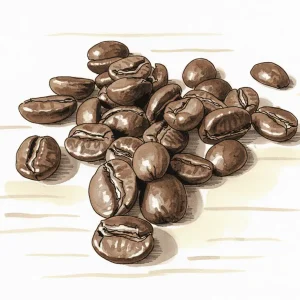BRAZIL
Brazilian coffee offers a full body, mild acidity and subtly sweet flavors of chocolate and nuts. Sul de Minas is known for floral notes and fruity accents, while regions such as Cerrado Mineiro consistently deliver sweet, balanced beans that are surprisingly complex.
BRAZIL Beans
Showing 17–32 of 204 results
De goedkoopste prijzen per 1 kg worden weergegeven
-
Bombita
€ 122,40 -
BorgmanBorgman blend
€ 38,00 -
Brasil California Love
van Zwarte Roes€ 140,00 -
Brasil Capricornio
van Zwarte Roes€ 123,80 -
Brasil Capricornio Pioneiro
van Capriole Café€ 42,00 -
Brasil DECAF Frutas Prohibidas
van Gebrand op Smaak€ 35,80 -
Brasil Santos
van Sophia’s Coffee€ 111,96 -
Brasil Santos 500 gram
-
Brasil Yellow Bourbon
van Blooss Coffee€ 99,80 -
Brasil Yellow Bourbon (Fazenda Mariano)
van Gebrand op Smaak -
Brasil Yellow Bourbon (Mantiqueira Mountains)
van Gebrand op Smaak -
Brazil
€ 43,00 -
Brazil
van Heilige Boontjes€ 29,50 -
Brazil – Daterra – Summer Solstice – tree dried Natural
van Five Ways Coffee€ 32,00
More About BRAZIL
Location and Terroir
Brazil is the world’s largest coffee producer and spans multiple regions, including Sul de Minas, Mogiana and Cerrado Mineiro. Each area distinguishes itself through altitude, climate and soil. Higher-lying districts (around 1,000 to 1,300 metres) yield greater complexity and refined aromas, while lower plateaus produce a steady, sweet flavor. During the dry winter months (May to September) rainfall is almost absent, which is ideal for sun‑drying coffee cherries.
Key Varieties
In Brazil, Arabica variants such as Mundo Novo, Catuaí and the highly prized Yellow Bourbon dominate. Mundo Novo is known for high yield and a classic nutty‑chocolate undertone, Catuaí combines fruity accents with mild acidity, and Yellow Bourbon excels with honey‑like sweetness and floral tones. Alongside these Arabicas there is Conilon (Robusta), mainly in Espírito Santo, which offers more body and earthy flavors.
Processing Methods and Quality
Natural drying (Natural) often takes place on large patios or raised beds, where the whole cherry dries together. This process yields a sweet, full mouthfeel with notes of nuts and cocoa. The Pulped Natural or Honey method removes the skin but leaves part of the pulp for extra sweetness. Although some estates also produce fully washed beans, Natural and Honey are the most common. Well‑known fazendas, such as Fazenda Daterra, also experiment with modern fermentation techniques and regularly achieve high scores in competitions like the Cup of Excellence.
Taste and Finish
The typical Brazilian flavour is characterised by mild to medium acidity, a creamy mouthfeel and sweet accents of chocolate, nuts or caramel. Sul de Minas sometimes adds subtle fruity or floral overtones, while Mogiana and Cerrado Mineiro are known for their balanced, approachable profile. This gentle acidity makes Brazilian coffee a perfect base for espresso blends but also a single‑origin favourite with an all‑round character.
Brewing and Roasting Tips
A medium to medium‑dark roast (City to Full City) brings out the best in Brazilian beans. Lighter roasts can reveal unripe or raw flavours, while roasts that are too dark can introduce ashy notes. Espresso lovers enjoy a delicious crema and smooth texture with a slightly longer extraction, especially with varieties like Yellow Bourbon. Filter methods such as the V60 or Chemex highlight the sweetness, while a French press emphasises the full body. For iced‑coffee fans, cold brew with Brazilian beans offers a mild, chocolate‑rich flavour without excessive bitterness.
Learn More in Amsterdam
Specialty coffee bars in various neighbourhoods of Amsterdam gladly serve Brazilian microlots because they pair well with diverse brew methods. Roasters that pay attention to traceable origin and mild roast profiles can achieve surprising results, especially when beans from regions such as Carmo de Minas or Bahia are selected. The result is a diverse range of unique flavour nuances, ideal for anyone seeking a cup that is both full‑bodied and subtle.

